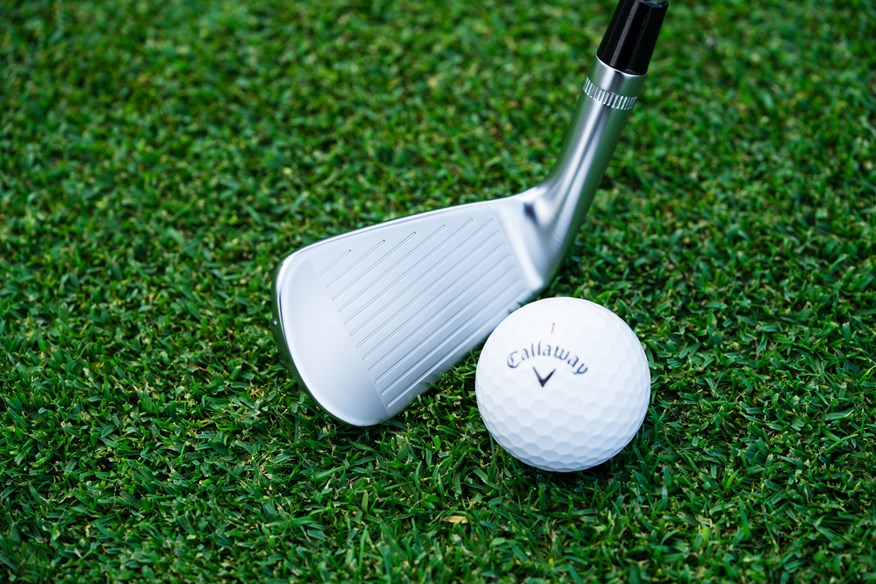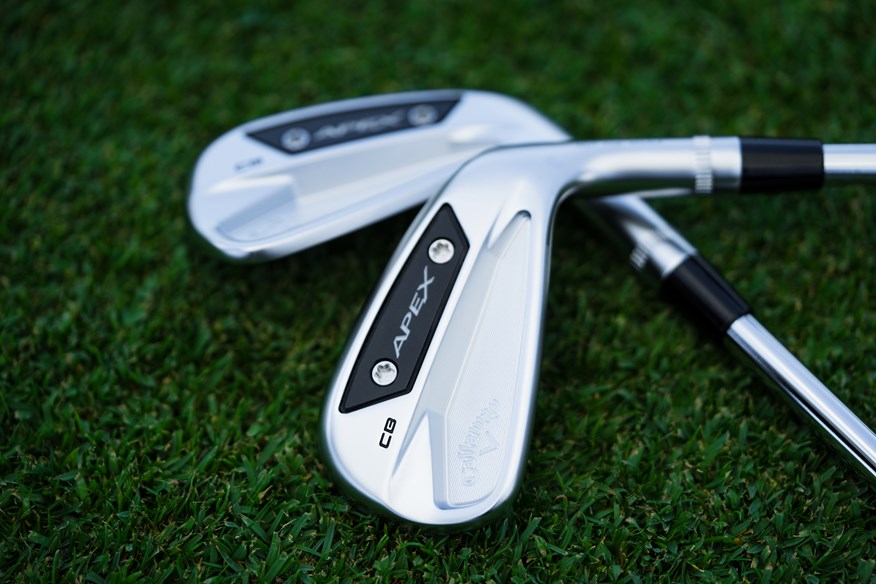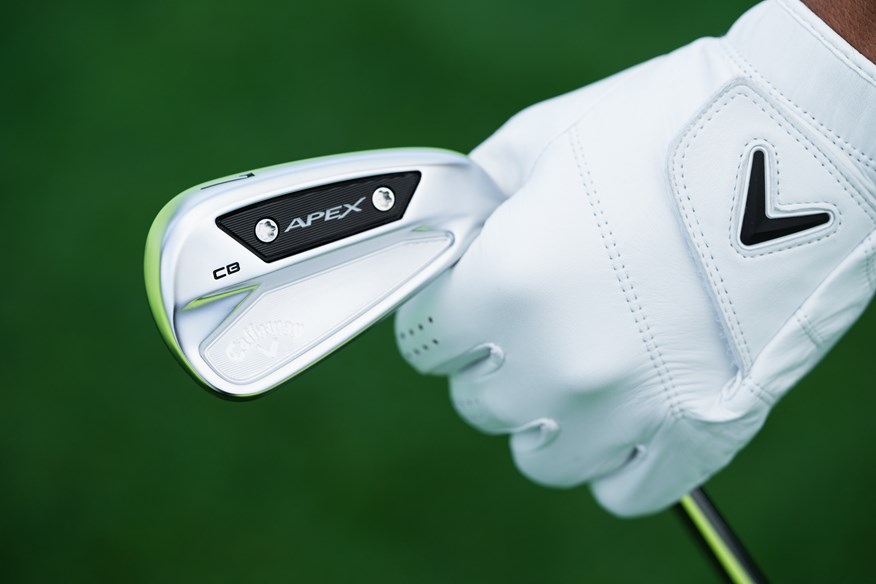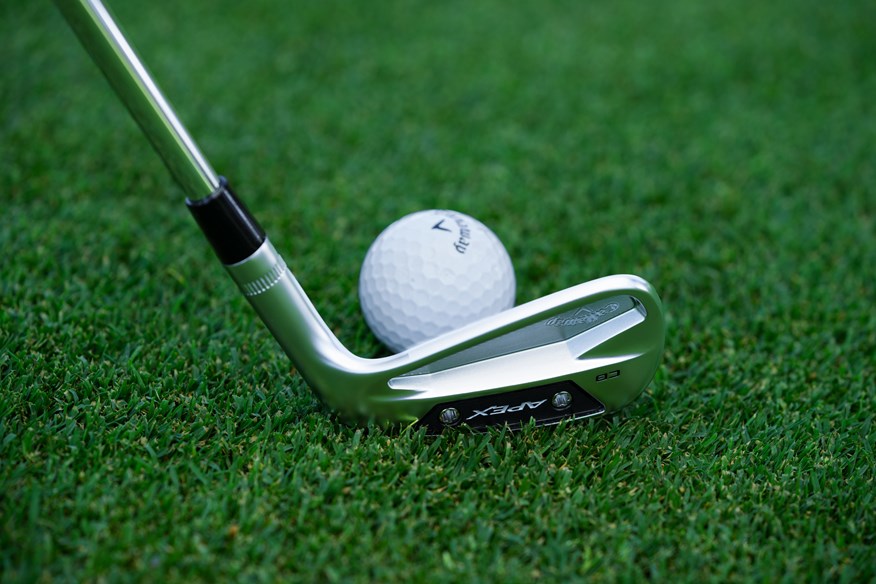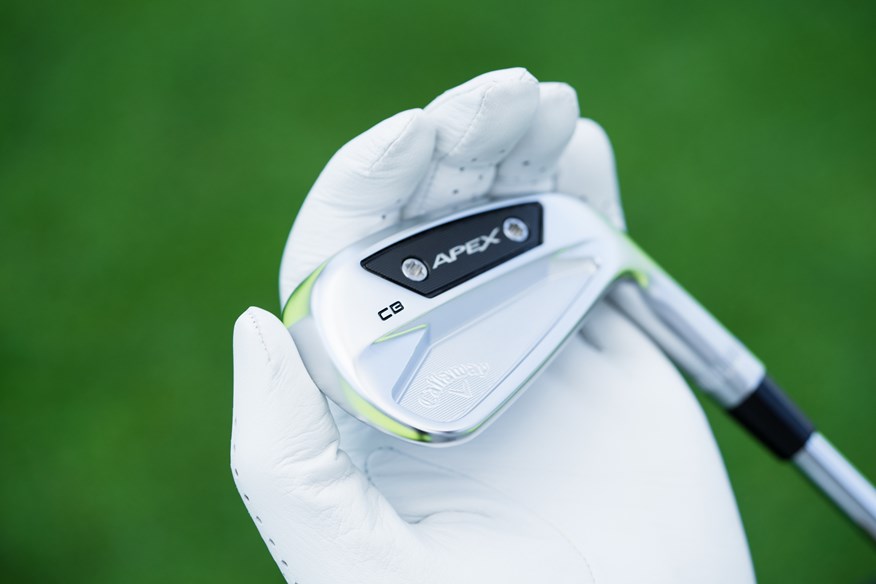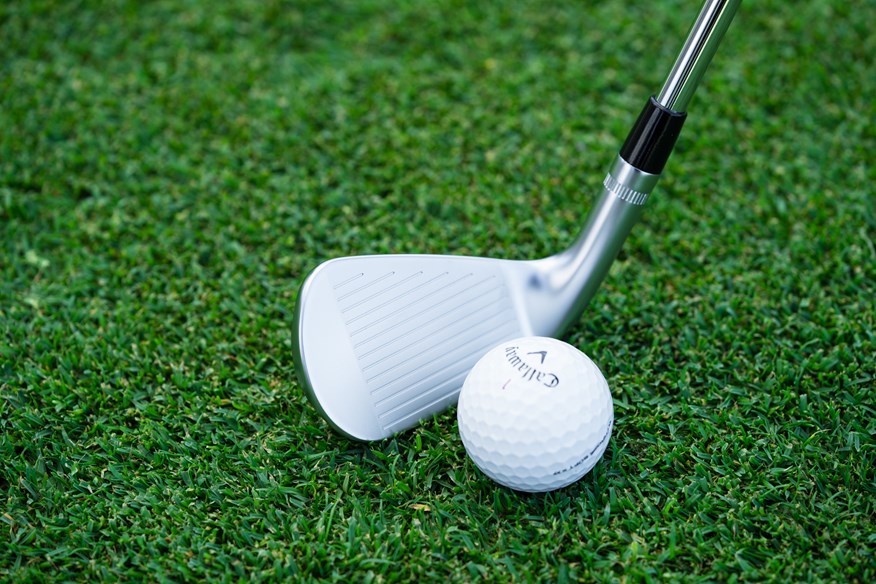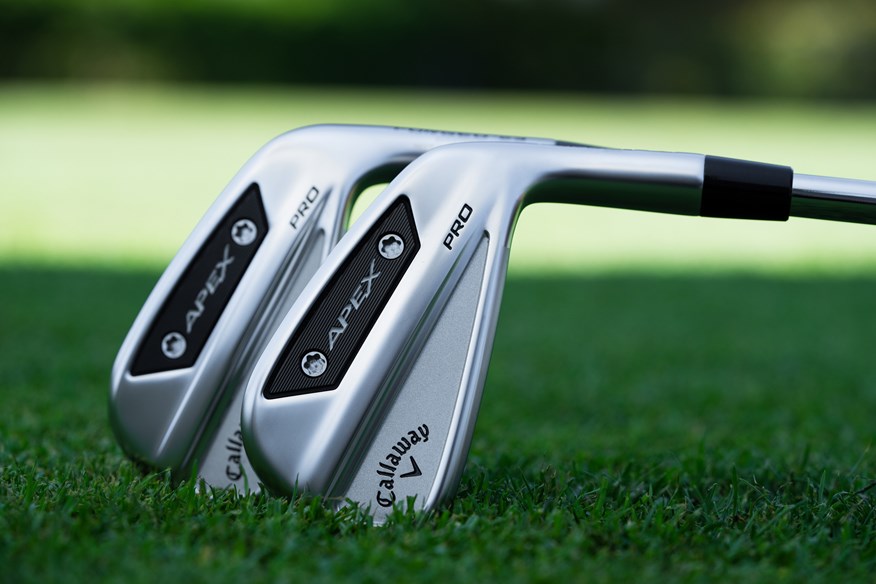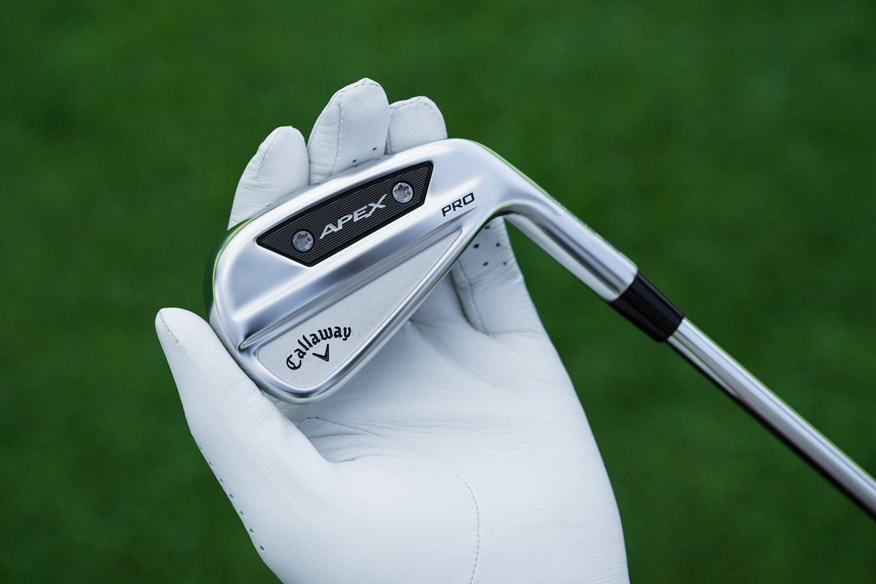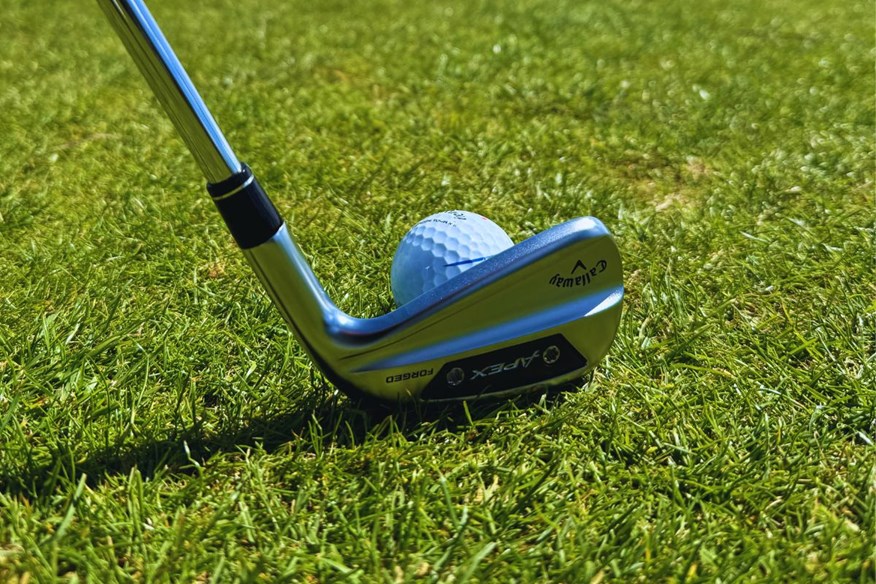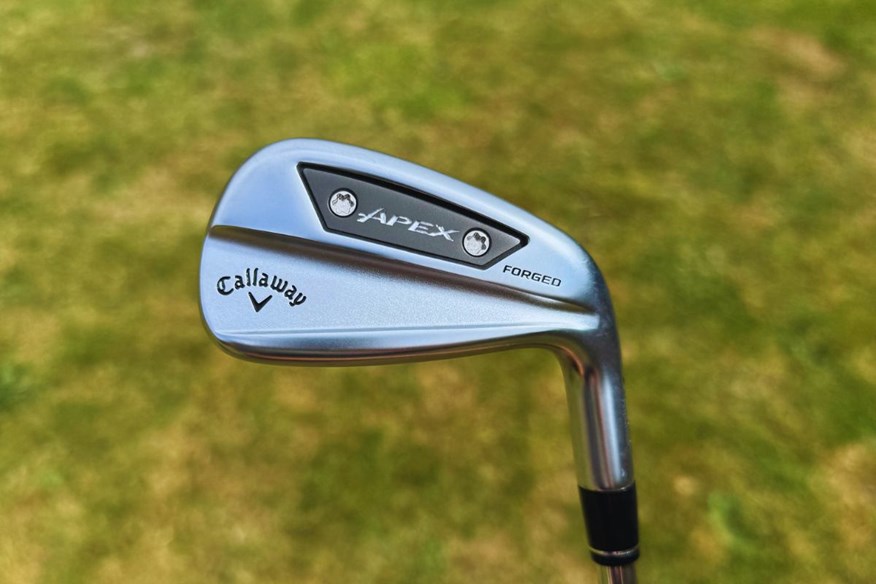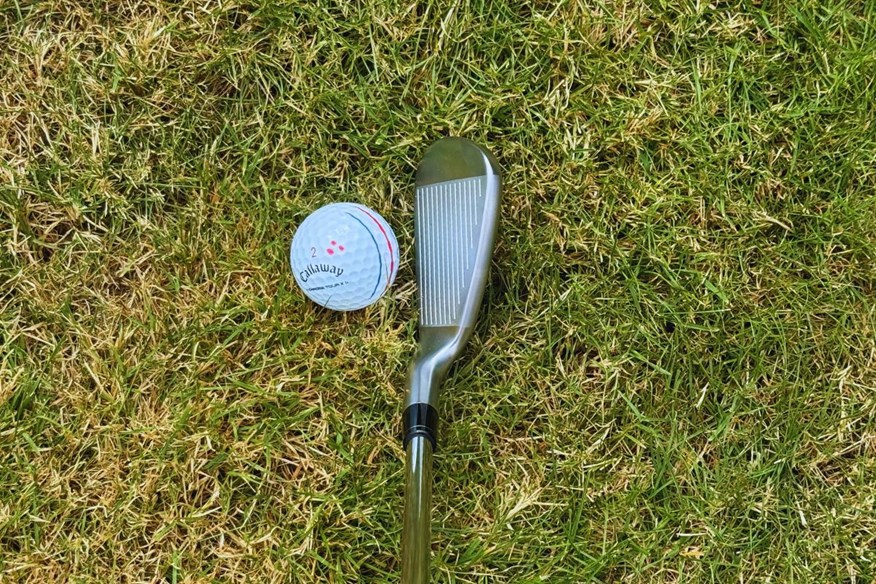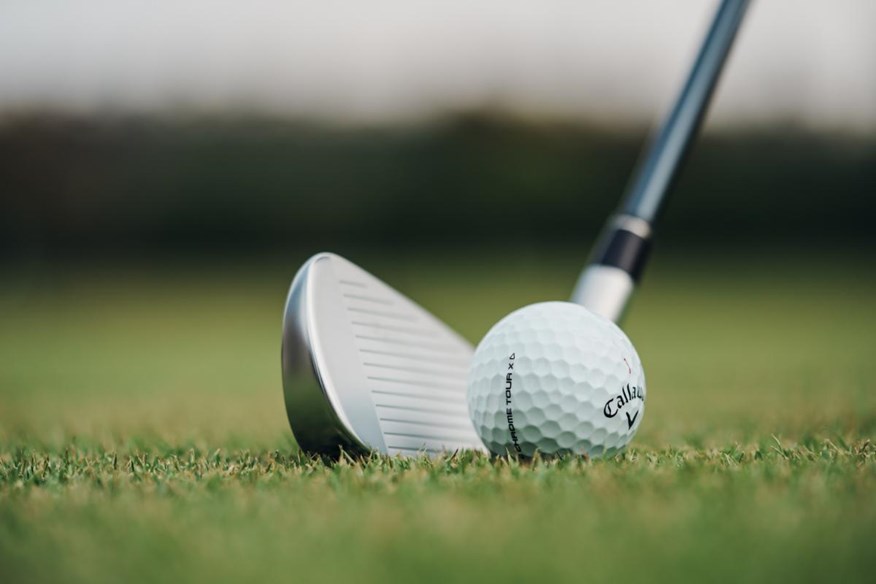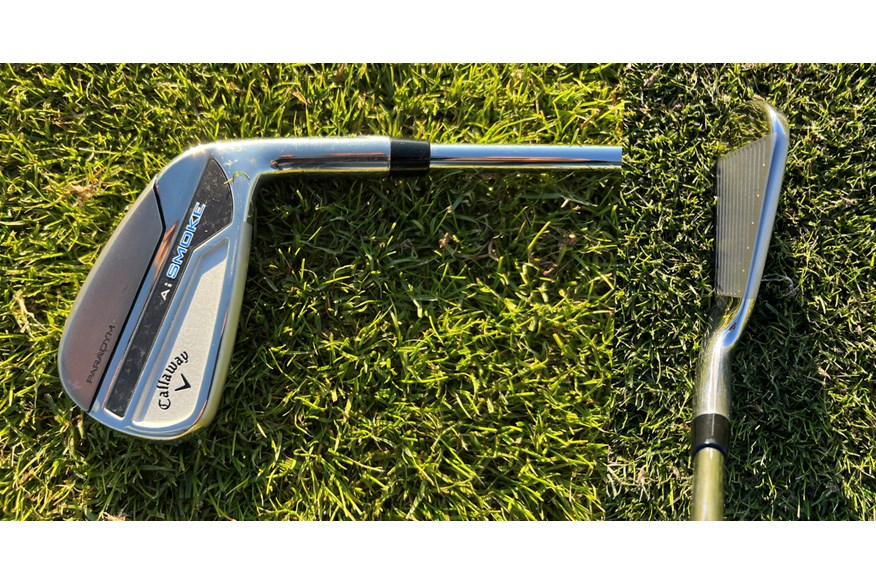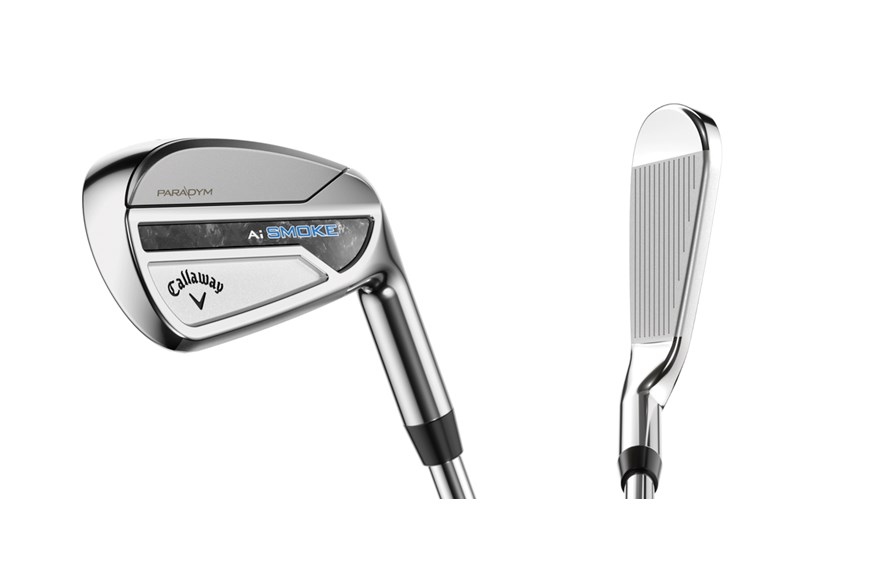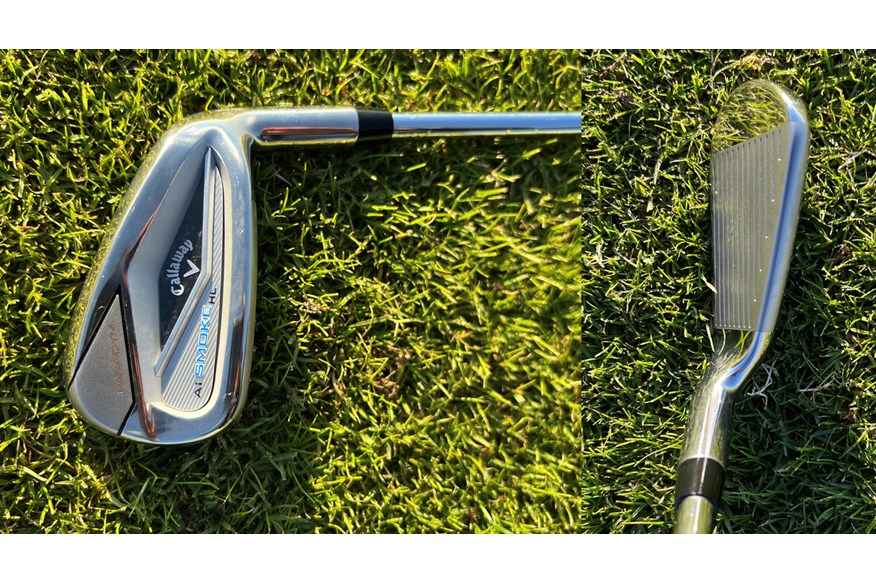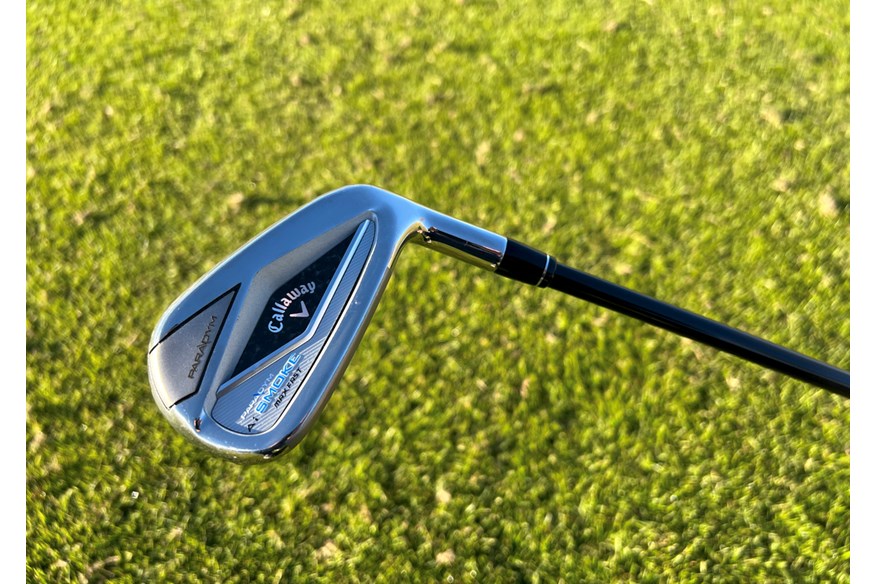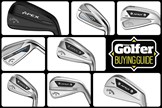Discover Callaway’s Best Irons in 2025: Eight Models Tested and Reviewed by Professionals
Last updated:
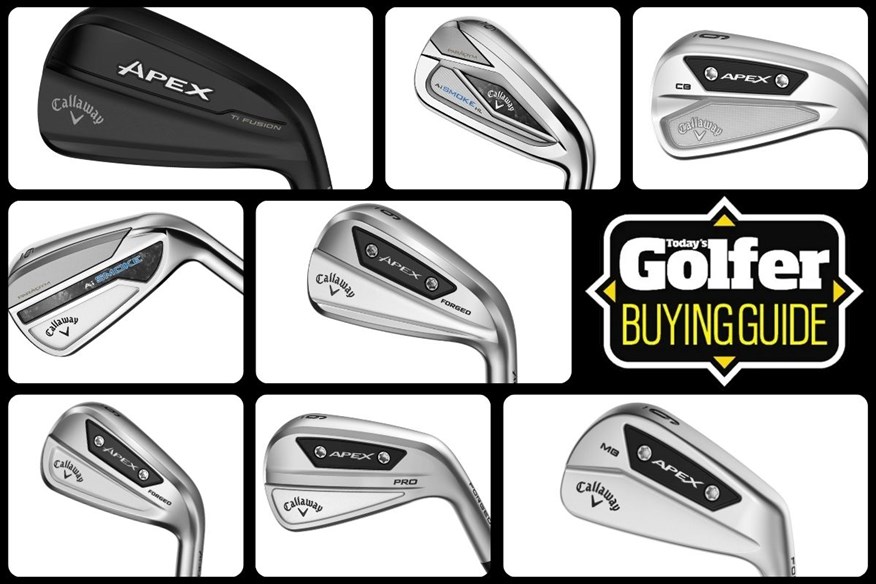
Which Callaway irons are best for your game? Here’s a complete guide to each iron in Callaway’s 2025 line-up, who they are aimed at, and how they performed when tested by our pro.
Callaway, like most of the biggest manufacturers, have multiple irons aimed at hugely different golfers in their line-up. But which of the Callaway irons is best for your game? To answer that question, we’ve tested them all so we can compare the data and performance head-to-head to help identify the best Callaway irons for various golfers at different handicap levels.
If you’re not sure which manufacturer is worthy of your investment, check out our pick of the overall best golf irons first.
Some Callaway irons are aimed squarely at tour pros and truly elite golfers, while other models are a lot more forgiving, with high-handicap golfers or slow swing speeds in mind. Let me explain how to choose which best suits you.
Best Callaway Irons – Jump to:
What type of iron do you need?
Irons come in lots of styles and are generally broken down into categories, each different style suits a distinct capability of golfer, so it is important to pick the right category of iron to suit you. The categories you’re most likely to come across are blades/muscleback, players’ irons, players’ distance irons, mid-handicap/game improver irons, and high handicap or super game improver models.
Here’s how to decide which best suits you.
Blades/Musclebacks
Blade golf clubs have smaller heads with narrower toplines and soles, they’re designed to offer great looks, feel, and control. Blades typically have less hosel offset so the center of gravity is not as far back, so even though most blades have more loft (as the better players who use them don’t crave more distance) they don’t necessarily flight shots shots higher.
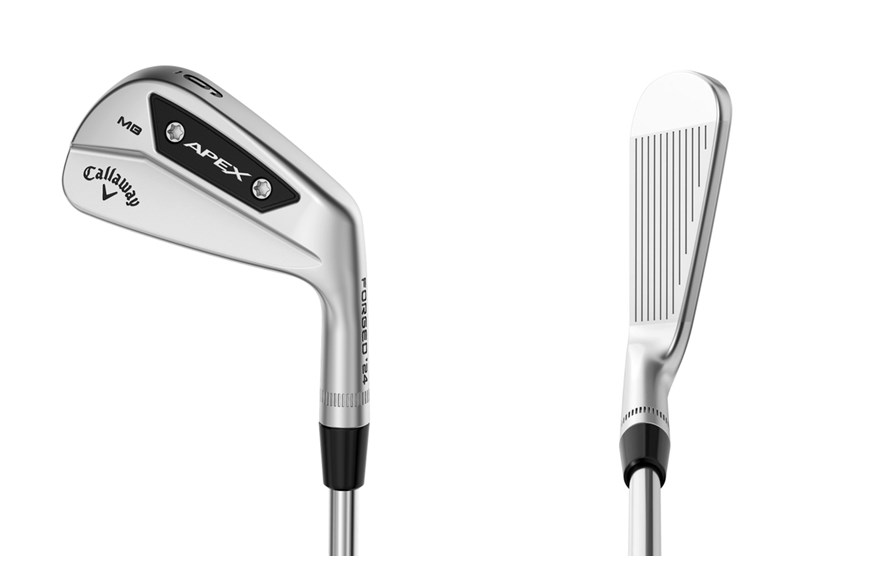
The best blades will typically have weaker, traditional lofts (34° or even 35° for a 7-iron) and produce higher spin but less distance than other types of iron. Thanks to the smaller head and more forward CG (center of gravity) the best blades are always the least forgiving irons you can buy. Callaway makes one muscleback blade the Apex 24 MB.
Players’ Irons
Players’ irons are typically aimed at low handicappers, elite golfers, and many tour pros choose models from this category. Expect similar characteristics to blades (small heads, weak lofts, nice looks) but with a shallow cavity back or modern hollow body with a fraction more technology packed in to add just a touch of forgiveness.
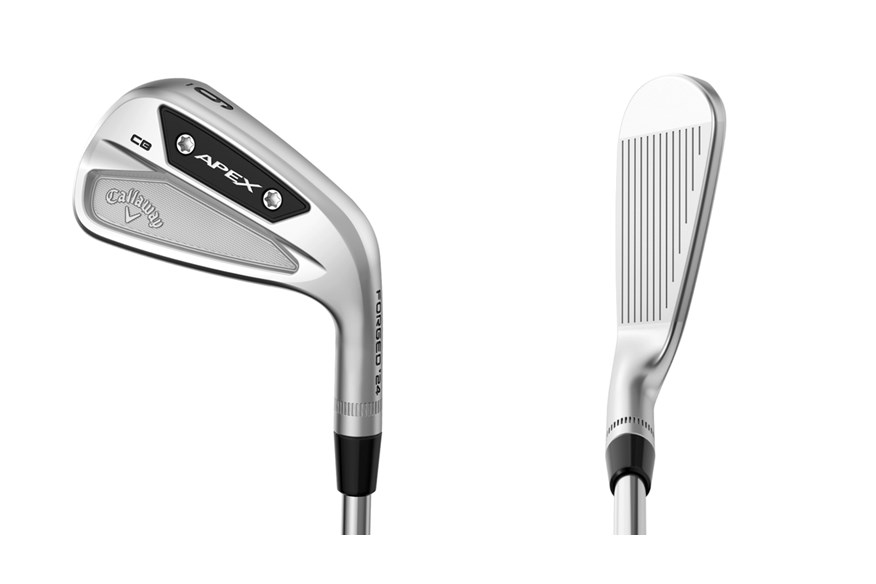
Golfers should not be buying in this category if they need to keep an eye on distance, if you do then players’ distance irons should be the category you shop within. If you strike your irons consistently well and don’t need much help with distance or forgiveness, the best players’ irons could be for you. Make no mistake, though, there are far more forgiving and distance-boosting irons available.
Callaway makes two players’ irons the forged one-piece Apex 24 CB and hollow body Apex 24 Pro.
Players’ Distance Irons
Callaway effectively started what is today a hugely popular Players’ Distance Iron category back in 2014 when they unveiled their first Apex model that teamed a forged head, with cavity back performance and a stronger loft. Decent club golfers fell head over heels in love with the idea, and today the category has evolved to include lots of hollow body, thin/fast face constructions.
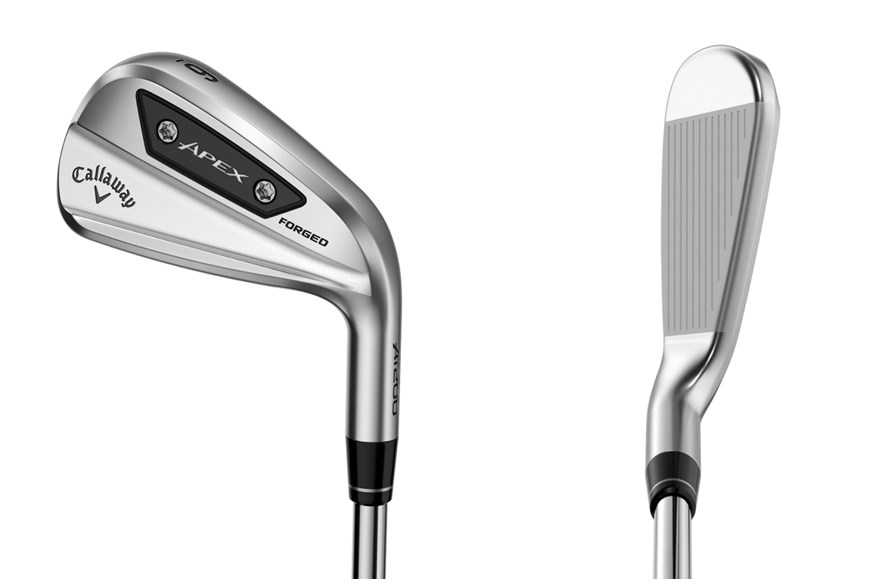
The category is spearheaded by the popular TaylorMade P790. The best Players’ Distance irons pack a lot of distance and forgiveness potential into head shapes that look great. Expect stronger lofts than players’ irons and typically you won’t want to be playing off much more than a 12 -14 handicap to think about playing models in this category.
The best players’ distance irons will typically create more speed and distance than blades and players’ models, and while they may not generate quite as much spin, their high launch helps shots hold greens. Callaway makes two Players’ Distance Irons the Apex Ai200 and the super costly Apex Ti Fusion.
Mid-Handicap/Game Improver Irons
Without question, the mid-handicap iron category is the biggest and consequently most lucrative in the game as this is the area most golfer’s games sit within. Game Improver Irons are never quite as sleek as players’ or players’ distance models but they are hugely versatile and offer great distance and forgiveness potential.
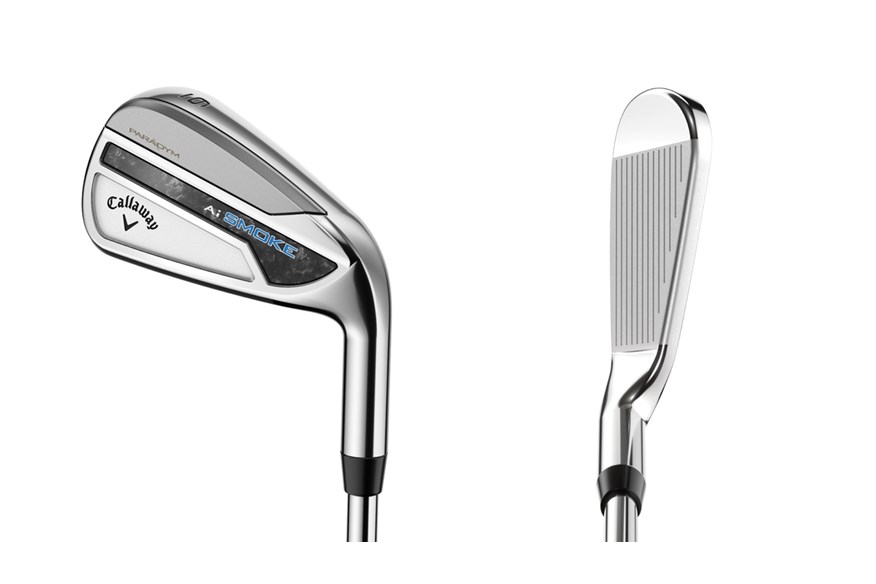
Most golfers will notice how cavity-back game improver irons don’t sound or feel quite as nice as a one-piece forged blade or players’ iron but the attraction here is when shots are sprayed across the face of the iron golfers can still expect to see reasonable results.
The best Mid-handicap irons usually fall into the hands of golfers with a handicap of 8 or above, they’re good for golfers who value extra forgiveness over looks, the forged Apex Ai300 and cast Ai Smoke irons both sit within this category.
High-Handicap/Moderate Swing Speed Irons
These irons tend to be the most forgiving, with their bigger, chunky heads being packed with technology to make it as easy as possible for golfers of all abilities to get the ball airborne and heading in the right direction. They won’t win any awards purely on looks or feel, but if you struggle to hit irons well, the best high-handicap irons could help you.
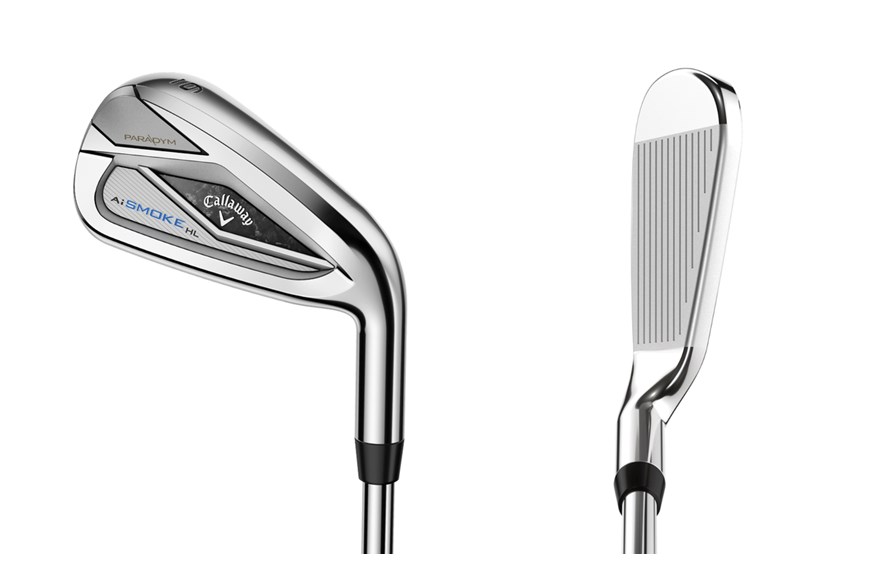
In today’s market also look out for higher lofted High Launch irons which are trending up. Models like the Ai Smoke HL are designed for more average-speed players to help flight shots for optimal spin, height, descent angle and carry distance. Callaway’s Ai Smoke Max Fast iron is also lighter to boost club speed.
Should you buy forged or cast irons?
At some point in their construction, both forged and cast irons were made of molten metal. Forged irons come from billets of steel stamped under massive force into a clubhead shape in several stages which compresses and aligns the grain for a claimed greater feel.
Cast heads are created by molten steel poured into molds. Casting technology has moved on massively and it’s said heat treatment after casting combined with the type of steel used today means a cast head can feel very much like a forged one, so if you’re unsure if you can feel the difference don’t think forged irons are better quality.
What does hosel offset do?
Larger amounts of offset are usually found in game improver and high-handicap iron models. By setting the face behind the hosel there’s a little more time to square the face at impact and the center of gravity is positioned further back so it’s easier to flight shots, particularly at slightly lower speeds.
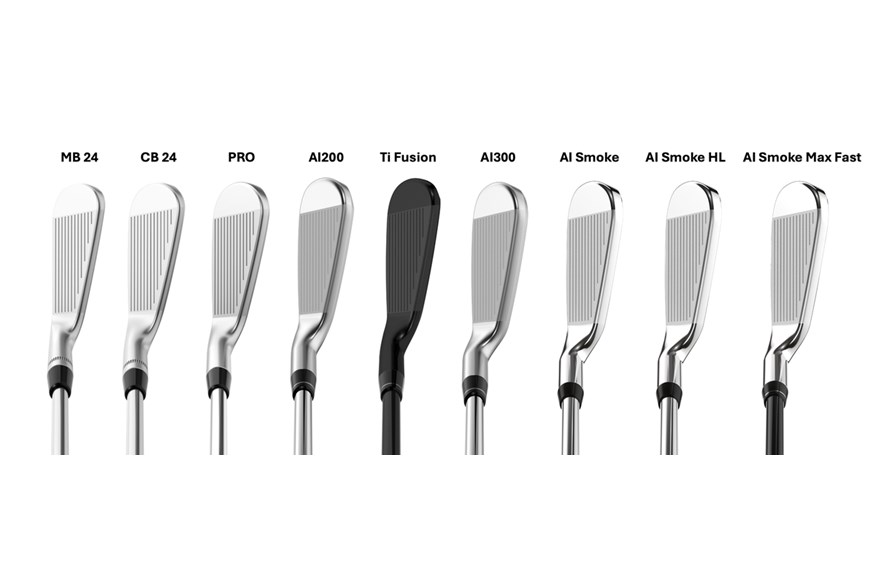
Better player irons generally have less offset so the leading edge is much more in line with the hosel. This makes the club a little easier to ‘shape’, as the center of gravity is further forward, hence why shot shapers often love forged irons.
Best Callaway irons at a glance:
Best muscleback blade iron: Callaway Apex 24 MB – View Offer
Best tour iron: Callaway Apex 24 CB – View Offer
Best forged players’ iron: Callaway Apex 24 Pro – View Offer
Best players’ distance iron: Callaway Apex Ai200 – View Offer
Best forged mid-handicap iron: Callaway Apex Ai300 – View Offer
Fastest ball speed of any Callaway iron: Callaway Paradym AI Smoke Irons – View Offer
Best for forgiveness: Callaway Paradym AI Smoke HL Irons – View Offer
Best for slower swing speeds: Callaway Paradym AI Smoke Max Fast Irons – View Offer
Best Callaway Irons
From the joint weakest loft in the Callaway iron family, it should come as no surprise that the MB produced the least amount of ball speed and carry distance for our consistent hitting test pro.
Don’t fall into thinking that higher lofted players’ irons and blades flight shots higher with steeper descent angles, as our test data shows both are below average for the Callaway family. The reasoning comes down to the center of gravity being further forward with blades (thanks to less offset) there will also be less weight below the sweetspot, and heavier, lower launch shafts usually come as standard too.
Over the several times we've tested the MB (in the hands of our test pro) we've seen 7 - 12 yards of 7-iron carry distance difference between the MB and the cracking hollow body Apex 24 Pro, so in my opinion the vast majority of decent golfers don't need to look this far down the line-up to find their happy place with Callaway irons.
Read our full Callaway Apex 24 MB iron review.
Pros
- A beautiful-looking iron
- Very workable
- Consistent performance on pure strikes
- Exceptional feel
Cons
- Unforgiving
- Shorter distances than any other model
| Category: | Muscleback blade |
| Handicap range: | Four and below |
| Construction: | Forged from a single piece of 1025 carbon steel |
| 7-Iron loft: | 34º |
| Forgivensss rating: | 1/5 |
Callaway sees the CB as the ultimate tour iron. They’ve worked closely with their Tour players to create a shape, size, and profile that will deliver for the very best players in the world. You should expect a thinner topline and slightly longer blade lengths than previous models but also a look that will seamlessly blend with the other Apex Pro Series models. I particularly like the very straight leading and top edges that give a super clean appearance at address.
In our test pros hands (Neil Wain) the CB was faster and 7 yards longer than the muscleback MB which comes down mainly to how punishing off-center strikes are with the blade. There’s only 1° of 7-iron loft difference between the CB and Pro yet the hollow body Pro nudged ball speed up by 3.2mph and a further 5 yards of carry distance.
If you are drawn to the CB just remember the Pro produced more spin, more shot height, and a steeper landing angle (from less loft) for our test pro, all traits decent club golfers are likely to appreciate. With Neil playing a set of CBs this year you are guaranteed good feel and feedback from this beautiful model.
Read our full Callaway Apex 24 CB iron review
Pros
- Used by some of the world’s best golfers
- Looks at address will suit good golfers
- Good speed and distance from a weak loft
Cons
- Other models offer more forgiveness
- Not good for average swing speeds
| Category: | Tour Level Players’ Iron |
| Handicap range: | Four and below |
| Construction: | Forged from a single piece of 1025 carbon steel |
| 7-Iron loft: | 34º |
| Forgiveness rating: | 2/5 |
Don’t be fooled into thinking the Apex 24 Pro is a TaylorMade P790 alternative, it’s not and the weaker loft should tell you that. With a 33° 7-iron loft this model is very much an alternative to the hollow body TaylorMade P770 or PXG 0317 T, and based on our test results it's one of the best players' irons available in 2025.
With such a big difference in loft, ball speed, and carry distance if you’re considering this model, you really shouldn’t find yourself choosing between it and the Ai Smoke, as the pair were worlds apart (3.5mph of ball and 13 yards of carry distance with a 7-iron) for our test pro.
I’d be choosing this model if my handicap was in single figures, and I was looking for a lovely classy, and compact modern-day players’ iron. Even though the body is hollow, the forged feel and sound are excellent compared to Callaway's cast irons.
Read our full Callaway Apex 24 Pro iron review.
Pros
- Our favourite Callaway iron for looks
- Hugely consistent performance
- Reasonable forgiveness for a players' iron
Cons
- At £217 a pop they are expensive
| Category: | Modern Players’ Iron |
| Handicap range: | Eight and below |
| Construction: | Forged hollow 1025 body |
| 7-Iron loft: | 33º |
| Forgiveness rating: | 2-2.5/5 |
An elegant, forged hollow-body iron that mixes performance and precision
You shouldn’t be choosing between the Ai200 (a Players’ Distance Iron) and the more game improver Callaway Ai Smoke but if you find yourself doing so our data shows the 2° loft difference (7-iron) is likely to translate to over 2.5mph more ball speed and six extra yards of carry distance in favour of the Ai Smoke at reasonable speeds. The slightly weaker lofted (1° more lofted than the Ai Smoke) Apex Ai300 sits between the pair with the performance difference dropping to 1.2mph of ball speed and 4 yards of carry distance.
Don’t let speed and distance entirely cloud your judgement though. The Ai200 creates more spin and stopping power (a steeper descent angle) than the other two which reasonable club golfers will really appreciate as together I felt they added an extra degree of predictability to approach play and scoring.
Shot area and dispersion change from session to session, they’re a reflection of how our test pro performs with each club (much more so than highlighting more forgiving models), interestingly though the Ai200 produced the smallest shot area of all the Callaway irons we've hit this year. Hopefully that’s food for thought for golfers who question the consistency of fast face hollow body irons, and anyone swaying towards models like the Apex CB and Apex Pro which are aimed squarely at decent players’.
Read our full Callaway Apex Ai200 iron review.
Pros
- Super soft feel off the clubface
- Great turf interaction
- Stunning sleek design
Cons
- High price point
| Availability | 4 - PW & AW |
| Stock shafts | True Temper Dynamic Gold Mid 100 (s) UST Recoil Dart (g) |
| 7-iron loft | 30° |
| Forgiveness rating | 2.5/5 |
| Category | Players' Distance Iron |
Designed for incredible feel, increased power, and shot consistency.
In the hands of our test pro the slightly weaker Ai300 compared favorably with the Ai Smoke, I believe many club golfers will appreciate the slightly higher spin (343rpm) and steeper descent angle (0.5°) performance of the Apex, especially so at average speeds. Despite a slight loft difference, there’s very little to choose between the two in terms of ball speed or carry distance numbers, so you’ll be leaving nothing on the table whichever way you proceed.
Hopefully, you’re not sat on the fence between the Game Improver Ai300 and Players’ Distance Apex Ai200. If you are our data spells out you can expect to see a 1.2mph slower ball speed, 432 rpm more spin, and a steeper landing angle performance in exchange for 4 yards less 7-iron carry distance by opting for the Ai200.
If distance is your number one priority the Ai300 should then be your first port of call.
Read our full Callaway Apex Ai300 iron review.
Pros
- Super soft feel and sleek design
- Longer shaft to encourage increased club head speed
- Thicker top line to encourage confidence
Cons
- Slightly higher price point than most game improvement sets
| Availability | 4 - PW & AW |
| Stock shafts | True Temper Dynamic Gold Mid 90 (s) UST Recoil Dart (g) |
| 7-iron loft | 29° |
| Forgiveness rating | 3-3.5/5 |
| Category | Mid-Handicap Iron |
So long as you have decent levels of club speed (78+ MPH with the 7-iron) our Best Mid-Handicap Iron test highlighted the AI, thanks to generating the fastest ball speed and 3rd longest carry distance in the category, as an absolute beast this year.
Beware out in the marketplace as some unscrupulous retailers are likely to put this model in your hands if you’ve expressed an interest in the TaylorMade P790. The Ai Smoke thanks to being cast and not forged is less expensive (at full retail prices you’ll save £305), and thanks to its stronger loft the Smoke will be the favourite to win hands down in any launch monitor battle for ball speed or distance.
If you’ve been put off Callaway game improver irons over the last few generations as the top edges were particularly chunky and the heads came with shiny finishes that scuff up quickly the AI Smoke is a whole different proposition. This head shape is much more pleasing, hence why it could be attractive to golfers also looking for the best players’ distance irons.
See the AI Smoke as a cracking blend of modern hollow body technology, for golfers happy with their speed but with a tendency to spray shots across the face on a regular basis, and you’ll be thinking exactly along the right lines.
If speed or launch are your issue, the new AI Smoke HL or Max Fast will be better options.
Read our full Callaway Paradym AI Smoke irons review.
Pros
- Strong distances
- The best-looking game improver iron Callaway has made for a while
- Decent sound and feel
Cons
- Quite a low launch
- Tend to have a short shelf-life
| Category: | Mid-Handicap Iron |
| Handicap range: | Eight and above |
| Construction: | Cast hollow body |
| 7-Iron loft: | 28° |
| Forgiveness rating: | 3.5/5 |
For our test pro this weaker lofted model was never going to be his fastest and longest Callaway model, but at more average club golfer paces things will be a much tighter call (especially when your 7-iron speed dips below 78 mph). The HL upped launch, spin, and descent angle over the standard AI Smoke iron which will be hugely beneficial in helping average speed players flight shots to fly hazards and stop on the dancefloor, which over the course of a season will knock shots off your game.
Expect a slightly larger head (but nothing so big and distracting as recent Callaway super game improver irons like the Rogue ST Max OS), more hosel offset, and a wider sole than the hollow body AI Smoke iron, all traits that will aid forgiveness when shots don’t impact the center of the bat.
Read our full Callaway Paradym AI Smoke HL iron review.
Pros
- Good distance at average speed
- Good stopping power at average speed
- Attractively shaped in this market
Cons
- Likely to be old hat in 2025
| Category: | High-Handicap / Moderate Speed |
| Handicap range: | 28 and below |
| Construction: | Cast cavity back |
| 7-Iron loft: | 30º |
| Forgiveness rating: | 4/5 |
With a 7-iron loft of 31° super game improver irons have never been so easy to launch. Throw in 40g graphite shafts and lightweight grips as stock components and you have a model that’s decked out to seriously up enjoyment of the game for slower speed players.
To get the best out of this model it’s likely you will have a 7-iron speed less than 70mph, so we’ve not tested it with our test pro. But remember even though the Max Fast is very forgiving the choice to buy into it comes down to a lack of speed, not because the model is the most forgiving in the Callaway line-up.
Read our full Callaway Paradym AI Smoke Max Fast iron review.
Pros
- Expect a lightweight and lively feel
- The extra loft is a god-send for slower-speed players
- You won't find an easier-to-launch iron
Cons
- Doesn't have the attractive head profile of a Mizuno JPX923 Hot Metal HL
| Category: | Moderate Speed Players |
| Handicap range: | Any slower-speed golfer |
| Construction: | Cast cavity back |
| 7-Iron loft: | 31º |
| Forgiveness rating: | 4/5 |
Data comparison: How the best Callaway irons perform in numbers
| 7-Iron Loft | Ball Speed | Launch Angle | Backspin | Peak Height | Descent Angle | Carry Distance | Shot Area | |
| Callaway Apex 24 MB | 34° | 116.5 MPH | 16° | 6293 RPM | 28 YDS | 44.4° | 163 YDS | 254.4 SQ YDS |
| Callaway Apex 24 CB | 34° | 121.4 MPH | 15.1° | 6465 RPM | 29 YDS | 45° | 170 YDS | 265.2 SQ YDS |
| Callaway Apex 24 Pro | 33° | 124.6 MPH | 14.5° | 6598 RPM | 30 YDS | 45.4° | 175 YDS | 387 SQ YDS |
| Callaway Apex AI200 | 30° | 126.7 MPH | 13.9° | 5775 RPM | 30 YDS | 44.3° | 182 YDS | 157.3 SQ YDS |
| Callaway Apex Ti Fusion | 30.5° | 127.8 MPH | 13.2° | 6078 RPM | 29 YDS | 44.1° | 182 YDS | 178 SQ YDS |
| Callaway Apex AI300 | 29° | 127.9 MPH | 14° | 5343 RPM | 30 YDS | 44° | 186 YDS | 233.8 SQ YDS |
| Callaway Paradym AI Smoke | 28° | 128.1 MPH | 13.9° | 5000 RPM | 30 YDS | 43.5° | 188 YDS | 125.1 SQ YDS |
| Callaway Paradym AI Smoke HL | 30° | 126.4 MPH | 14.8° | 5452 RPM | 32 YDS | 45.2° | 181 YDS | 103.8 SQ YDS |
How we tested the best Callaway irons
To test golf equipment, we create a controlled indoor environment at Keele Golf Centre and use a premium tour-level golf ball (the Titleist Pro V1x). We collect all the data from every shot hit, using a Foresight GC Quad launch monitor. Find out more about how we test golf equipment.
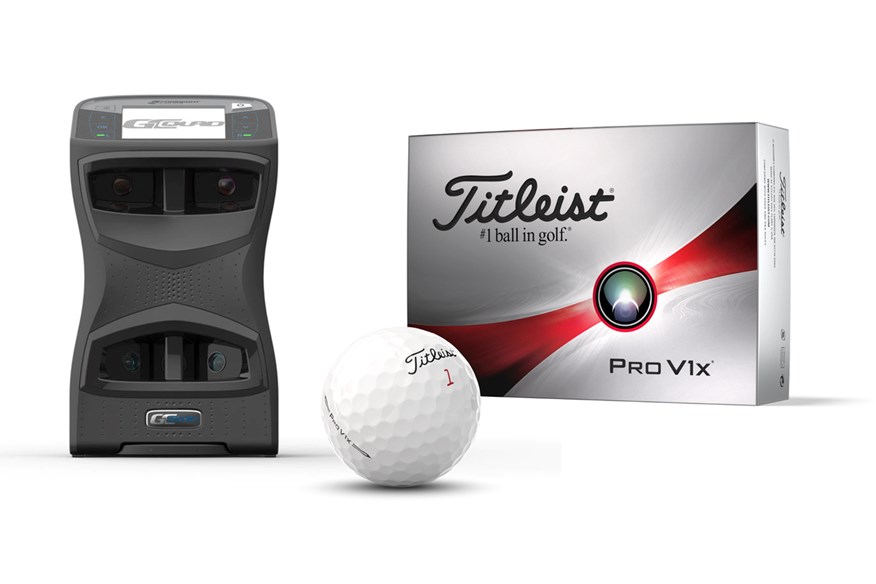
Why do we use a Titleist Pro V1x golf ball?
It would be easy to use just one test golf ball brand every year, but that inevitably leads to criticism for being too closely aligned to one manufacturer, especially if that brand’s equipment performs particularly well. To ensure fairness we like to switch manufacturers for the Top Gear test ball each year. For 2024 we’ve used the Titleist Pro V1x.
The brand revealed the latest Pro V1x model in 2023, and Titleist’s Senior Director of Golf Ball Research and Engineering, Mike Madson says “Consistency means when a golfer tees up a Pro V1 or Pro V1x, every properly executed shot they make is going to deliver the performance they expect and the performance they trust.”
Thanks to the Titleist Pro V1 and Pro V1x mopping up mountains of tour wins across all global tours we know the model is trusted by the world’s very best.
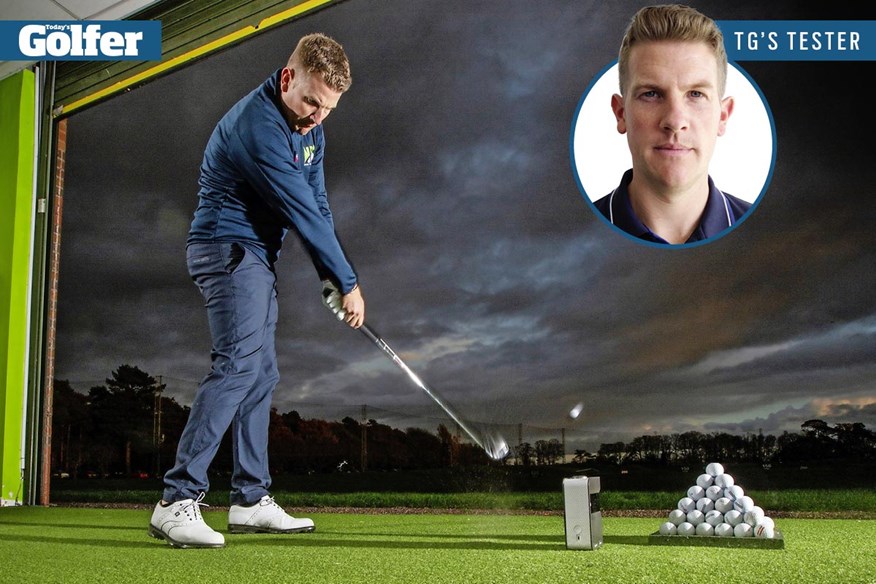
Why do we use a pro tester?
Speak to any golf club engineer about product testing and they all talk about needing a repeatable, reliable strike to offer any sort of valuable comparison. So, whilst we accept not all of the equipment included within our tests was designed for our test pro, what our data shows is a great comparison of how clubs in each particular category differ, which is hugely valuable in helping you narrow your choice as a consumer.
In 2024 we’ve tested 83 different 7-irons, during which our test pro missed a target green at 170 to 200 yards no more than a dozen times. He got a hole-in-one, lipped out, and hit the flag several times, he also loves hitting golf balls all day long. In short, Neil Wain is the perfect club tester due to his consistency in delivering accurate and reliable comparative data.
We would of course always recommend attending a proper fitting session, to ensure any purchase is tailored to your game.
Buying advice & FAQs
What are the most forgiving Callaway irons?
The Callaway Paradym AI Smoke HL are the most forgiving model in Callaway’s 2025 line-up. The 2023 Big Bertha (not part of our 2024 test) is also worth considering if ultimate forgiveness is a key factor for you.
Which Callaway clubs are best for high handicappers?
When it comes to irons, the Callaway Paradym AI Smoke HL will be a good fit for most high handicappers, while those with slower swing speeds should look at the AI Smoke Max Fast.
What handicap range do the Apex 24 irons suit?
Callaway repositioned the Apex family in 2023 to target more elite golfers, but then midway through 2024 introduced the AI200, AI300, and Ti Fusion, all of which are aimed at club golfers. So long as your handicap isn’t much higher than 20 there is an Apex in the family to suit you. I’d choose the Apex over the Ai Smoke family as they’re all forged, just remember the Ti Fusion has a titanium not steel face.
Does Callaway make a TaylorMade P790 alternative?
Yes, the Apex AI200 is a direct competitor to the TaylorMade P790, Titleist T200, and Ping i530. Where competitor models only have forged faces or bodies the AI200 is all forged which the company naturally says offers up a better feel and sound.
READ NEXT: Best TaylorMade 2024 Irons
BECOME A TODAY’S GOLFER MEMBER: Unlimited access to premium content and exclusive rewards!

